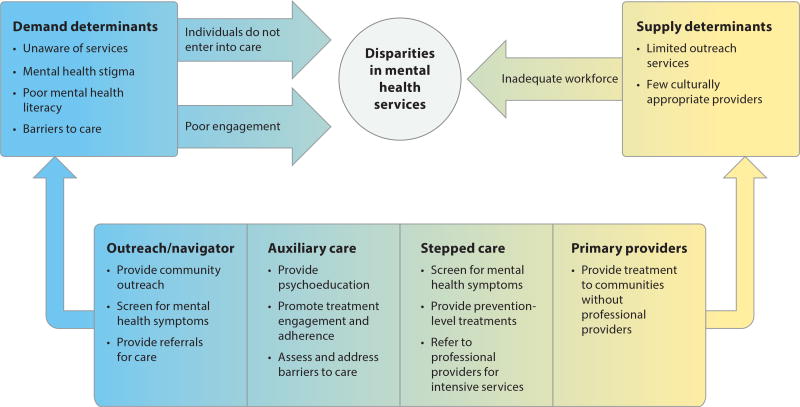Figure 1.
Lay health worker models of care can help address supply and demand determinants of disparities in mental health services. Across the continuum, the outreach/navigator model of LHW mobilization predominately seeks to increase the demand for EBTs; whereas with the task-shifting model, LHWs increase the supply of EBTs in the community.

